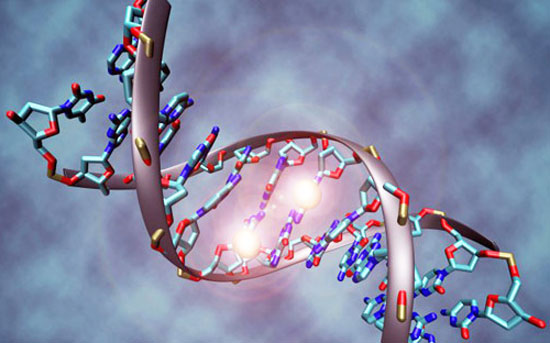Study: DNA methylation changes associated with prenatal mercury exposure during childhood

Published in Scientific Reports (a peer-reviewed, open access journal affiliated with Nature) on March 21, 2017, this study by Cardenas et al. investigates the role of prenatal mercury exposure in the methylation of the epigenome – looking for differences associated with maternal prenatal blood mercury levels. The research team, from Harvard, Brigham and Women’s and Mount Sinai, then followed up by testing whether the methylation differences persisted into childhood and whether there were associated differences in the children’s test scores.
Reported Findings
The researchers tested cord blood DNA samples from 321 mother/child pairs and found a differentially methylated region of 9 CpG sites of the PON1 gene only in boys. These changes were still evident in early childhood (2.9-4.9 years of age – 75 children) and mid-childhood (6.7-10.5 years of age – 291 children). In addition, increased cord blood DNA methylation of four of the individual binding sites on the PON1 gene was significantly associated with lower scores on the Peabody Picture Vocabulary Test in boys. The authors conclude, “The observed persistent epigenetic disruption of the PON1 gene may modulate mercury toxicity in humans and might serve as a biomarker of exposure and disease susceptibility.”
Discussion and questions
Briefly, a CpG binding site is a place on a chain of DNA where a cytosine and a guanine (two nucleic acid molecules in the sequence) are separated by a single phosphorus connector. These sites are used by the cell to regulate the expression of the gene. Clusters of these sites, called CpG islands, are found at the transcriptional starting sites of about 70% of genes. Typically, when a site is methylated (has a methyl group attached), the expression of that gene is silenced (turned off). When a site is unmethylated, the gene can express itself. This is relevant to many cancers, which often have hypermethylation of tumor suppressor genes, thereby not allowing the suppression of the tumor.
During a complex process like neurodevelopment, a cell’s ability to sequentially turn individual gene expression on and off is critical to proper “wiring” of a child’s brain. Also, there is evidence that methylation patterns are heritable which may explain transgenerational effects of environmental exposures.
PON1 is a gene that produces serum paraoxanase/arylesterase 1, a glycoprotein that deoxidizes lipids in the body and, thereby, reduces inflammation. It has been most studied in heart disease as it is attached to HDL and has a significant protective effect against arteriosclerosis. It also protects against damage from organophosphate pesticides and nerve gases like sarin. PON1 has been associated with autism risk in several studies. Since autism has also been associated with exposure to several pesticides, this study obliquely addresses a possible synergistic toxicity between mercury and organophosphates.
Notably, the mean maternal red blood cell levels of mercury during the second trimester of pregnancy in this cohort was 3.8 ng/gram or ppb and the mean maternal fish intake during pregnancy was 1.5 servings per week. Compared to the National Health and Nutrition Examination Survey (NHANES) total blood mercury mean of 7 mcg/liter for women of childbearing age, the mothers in this study would be around the 80th percentile for mercury exposure, so well within typical population limits.
As the study mentions, PON1 expression (enzyme activity) is low in infants and increases through childhood, becoming stable in adults. This suggests that from infancy on, there should be progressively less methylation of PON1 binding sites to allow increased activity. If prenatal mercury exposure is altering this process (in either direction), and thereby changing the trajectory of normal development, this might explain the associated developmental effects. However, this study does not address the impact of single nucleotide polymorphisms (SNPs) in the PON1 gene which also have a significant effect on gene expression.
PON1 has several SNPs which can affect enzyme activity and which vary significantly with ethnicity. This may partially explain a study of PON1 and organophosphate pesticide exposure in autism which found an association in American children, but not in Italian children.
In addition, PON1 has been associated with acrodynia, a disease caused by hypersensitivity to mercury – which is consistent with PON1 being a susceptibility gene for mercury health effects.
The Bottom Line:
This study connects some dots between expression of PON1, which appears to be protective against toxins, and mercury exposure in children. The study does the following:
Provides additional evidence that boys are more susceptible to mercury toxicity than girls.
Shows that mercury exposure can cause epigenetic effects and that the effects may be persistent. It also shows that this can take place at exposure levels relevant to the general population.
Reports on a fairly large cohort of children and follows them over time to report language impacts of mercury exposure rather than just reporting the methylation effects.
Provides a possible mechanism for mercury and PON1 in combination to impact autism risk.
yogaesoteric
December 15, 2018
